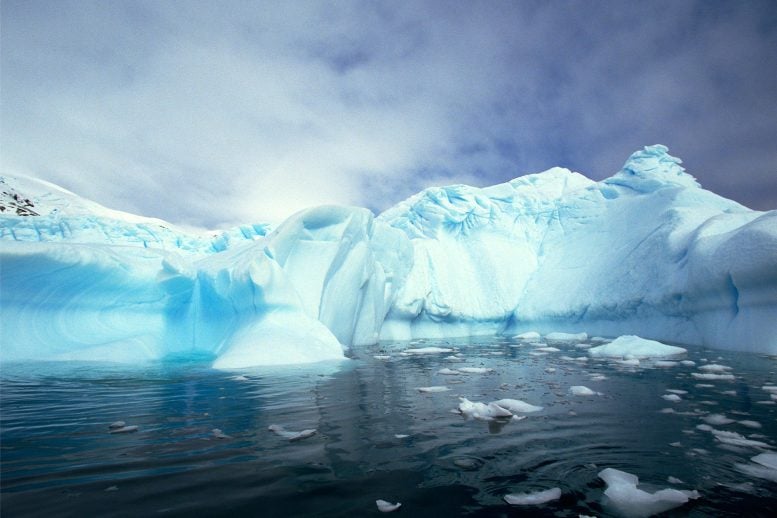
New research reveals that ozone in the troposphere is adding a great deal of heat to the Southern Ocean — more than scientists previously understood.
Air pollution heating up the Southern Ocean.
According to new research, a lesser-known form of ozone is playing a significant role in heating the Southern Ocean, which is one of Earth’s primary cooling systems.
Ozone is a gas that is made up of three oxygen atoms. Many studies have been conducted to investigate ozone in the stratosphere and its role in shielding people from the sun’s damaging UV radiation. Closer to ground level, in the troposphere, ozone is harmful to humans.
New research led by University of California, Riverside (UCR) scientists reveals this lower level ozone is adding a great deal of heat to the Southern Ocean — more than scientists previously understood.
This finding has now been published in the journal Nature Climate Change.
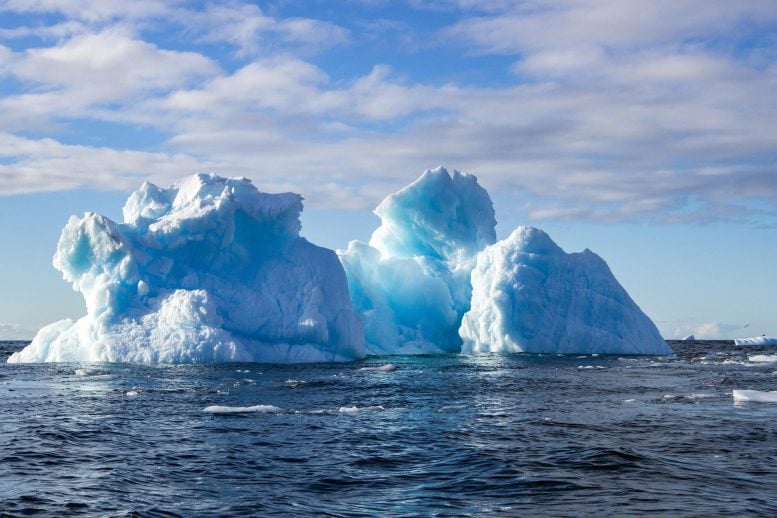
Iceberg in the Southern Ocean off the Antarctic Peninsula.
“People haven’t paid much attention in the past to tropospheric ozone in terms of ocean heat uptake. Based on our models, they should be,” said Wei Liu, UCR climate scientist and lead author of the new study.
Oceans remove a majority of the carbon and heat that enter the atmosphere when humans burn fossil fuels. The Southern Ocean, also called the Antarctic Ocean, collects a third of all excess carbon in the world’s atmosphere, and an estimated 75% of the excess heat collected by the world’s oceans.
It is important to understand this heating so it can be controlled. Increased ocean warming is contributing to well-documented issues of sea levels rising.
To further this understanding, Liu and an international team of scientists explored climate model simulations with changes in ozone levels between 1955 and 2000. These model simulations isolated both stratospheric and tropospheric ozone from other influences on Southern Ocean temperatures, allowing them to see how each factor contributes.

Tobacco smoke is one of many products that form volatile organic compounds, which form the building blocks of tropospheric ozone.
While both stratospheric and tropospheric ozone contribute to the Southern Ocean warming, the team found that the latter contributes more.
“Historically, about a third of the ocean’s warming is attributable to ozone. For this third, about 40% is from the stratosphere, and the rest is troposphere,” Liu said.
In the 1980s, growing concern about a pollution-generated hole in the protective upper ozone layer led to the Montreal Protocol. A landmark environmental agreement, it codified the resolve of all 198 members of the United Nations to regulate chemicals generating that hole.
Though satellite images still show low levels of stratospheric ozone over the Antarctic, there have been improvements.
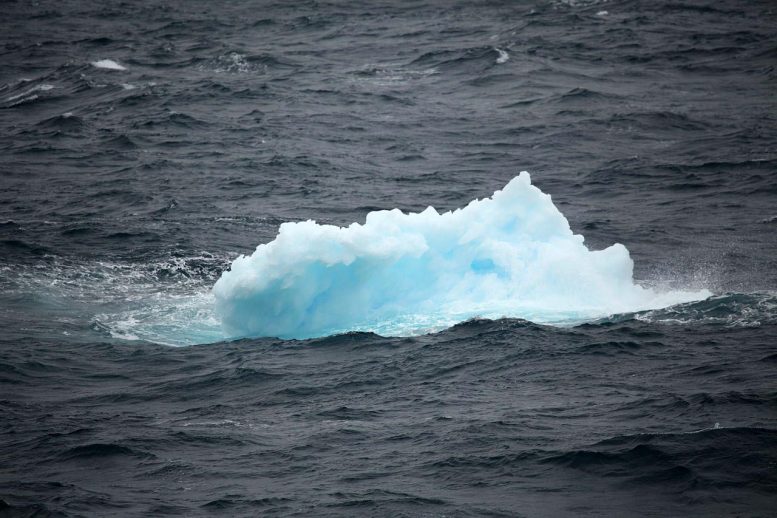
Melting ice in the Southern Ocean. Credit: Liam Quinn
“Since the protocol was ratified, ozone depletion has recovered somewhat in the stratosphere, and climate models project it will continue to gradually recover,” Liu said.
Liu believes the results of this study are useful for showing where people can make further changes that will improve the environment.
Volatile organic compounds, or VOCs, from products like pesticides, tobacco smoke, and automobiles are gases that form the building blocks of tropospheric ozone. The same is true for nitrogen oxides produced by combustion, or carbon monoxide from furnaces, gas stoves, and automobile exhaust. Many of these products can be modified to produce fewer VOCs.
“Tropospheric ozone is an air pollutant,” Liu said. “If we reduce our production of this, we get the dual benefits of less air pollution and most likely, less Southern Ocean warming as well.”
Reference: “Stratospheric ozone depletion and tropospheric ozone increases drive Southern Ocean interior warming” by Wei Liu, Michaela I. Hegglin, Ramiro Checa-Garcia, Shouwei Li, Nathan P. Gillett, Kewei Lyu, Xuebin Zhang and Neil C. Swart, 31 March 2022, Nature Climate Change.
DOI: 10.1038/s41558-022-01320-w

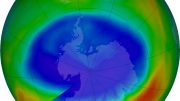
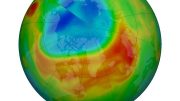
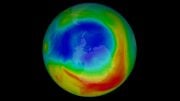
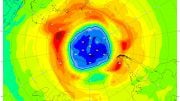


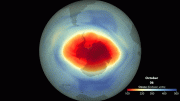
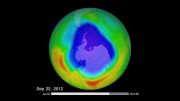
Just proves once again that climate scientist do not know their ass from a hole in the ground. T
That sounds like a “we’ll never know everything!” whine, but with meth.
“Many studies have been conducted to investigate ozone in the stratosphere and its role in shielding people from the sun’s damaging UV radiation. Closer to ground level, in the troposphere, ozone is harmful to humans.”
What isn’t said is that while tropospheric ozone can damage the lungs, it still provides protection against SW UV. The essence of the definition of pollution is that it is harmful. Most other pollutants don’t even have an upside.
“Oceans remove a majority of the carbon and heat that enter the atmosphere when humans burn fossil fuels.”
This is, at best, poorly worded. It sounds like waste heat from combustion is a problem. It is NOT. They follow that up with:
“It is important to understand this heating so it can be controlled.”
That really is a non sequitur because of the implication that it is waste heat that is causing ocean warming. The article makes an assertion of human influence, but sheds little light on how, other than “That’s what our models tell us.”
“While both stratospheric and tropospheric ozone contribute to the Southern Ocean warming, the team found that the latter contributes more.”
That isn’t too surprising since the tropospheric ozone, warmed by the absorption of SW UV, is in direct contact with oxygen and nitrogen of the troposphere, and the ocean surface. What is a little more difficult to understand is how humans are linked to the claimed warming from the stratospheric ozone. Assuming for the sake of argument that it is anthropogenic forces that are responsible for the stratospheric ozone depletion, instead of the circumpolar vortex, the depletion only occurs in the early-Spring. That is, during the rest of the year, the stratospheric ozone behaves as if there are no humans on the planet. What is the mechanism that results in the -20 deg C average ozone layer temperature ‘heating’ the -2 deg C sea surface?
“Though satellite images still show low levels of stratospheric ozone over the Antarctic, there have been improvements.”
The “improvements,” as measured by the area and depth of the ozone reduction, are erratic. The quote makes it sound like low levels of ozone are an ongoing problem throughout the year, when it is only a problem in the early-Spring. No mention is made of the fact that during the so-called “ozone hole,” there are anomalously high concentrations of ozone outside the circumpolar vortex, brought in from the tropics by the Brewer-Dobson circulation.
“Volatile organic compounds, …, from products like pesticides, tobacco smoke, and automobiles are gases that form the building blocks of tropospheric ozone.”
Those “building blocks” are created primarily in the northern hemisphere with its larger human population and industrialization. Why is it such a significant problem for the Antarctic Ocean?
This is one of the worst ‘scientific’ studies I have seen recently. It is even worse than the press release on the same journal article that was published here on April 18th. UC Riverside has to work overtime to produce something worse than the infamous University of reading!
https://scitechdaily.com/ozone-may-be-weakening-one-of-the-earths-most-important-cooling-mechanisms-heating-the-planet-more-than-we-realize/